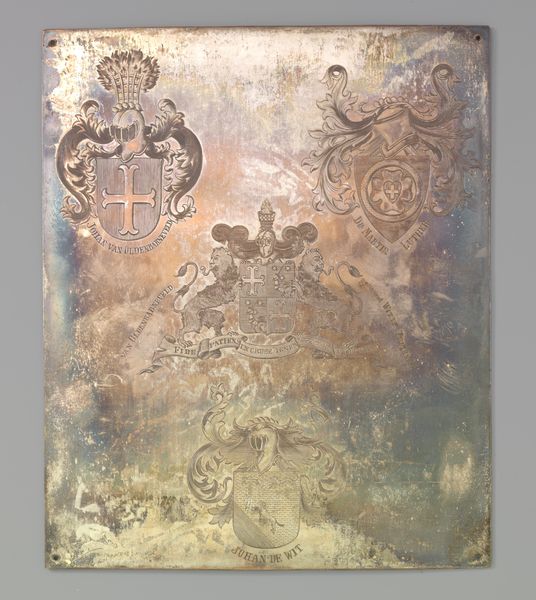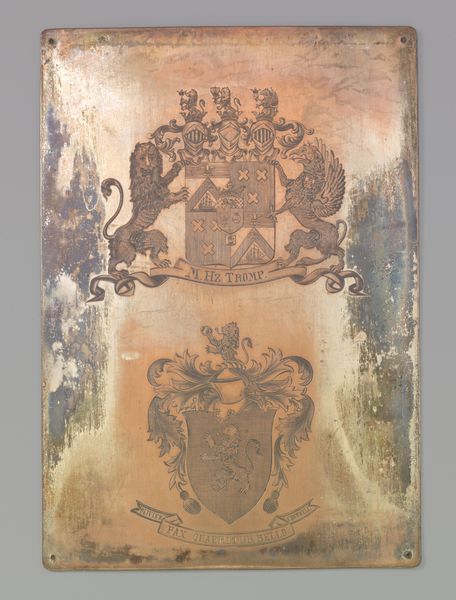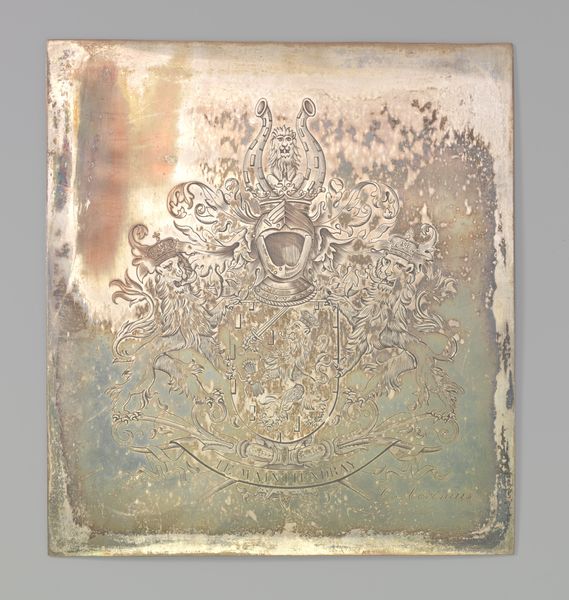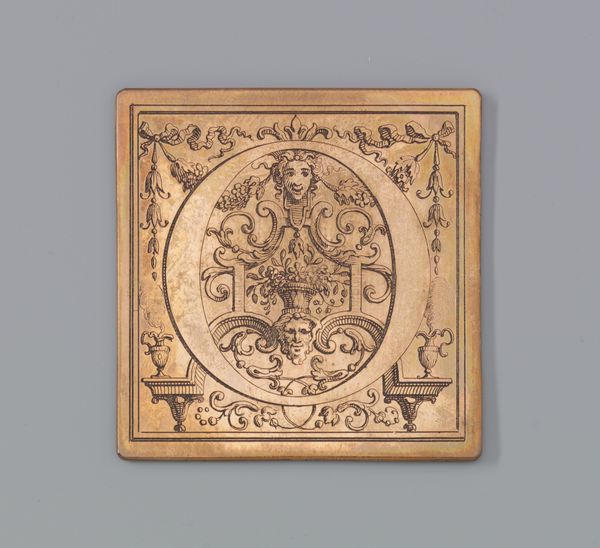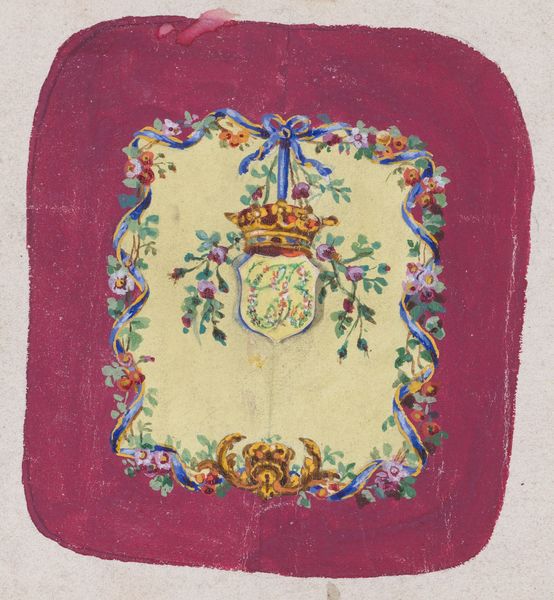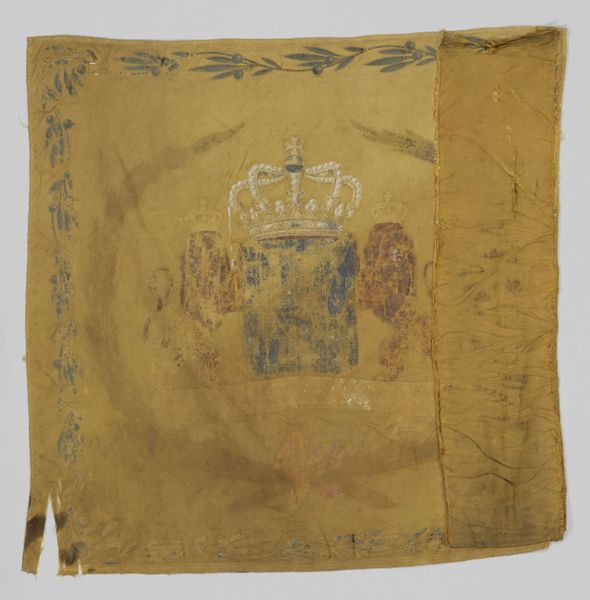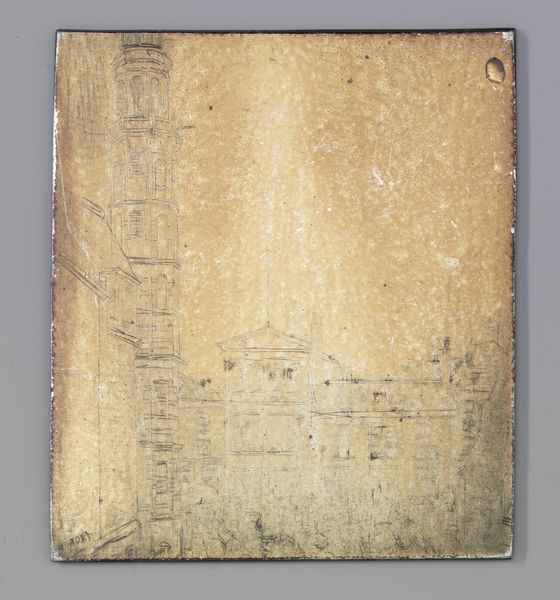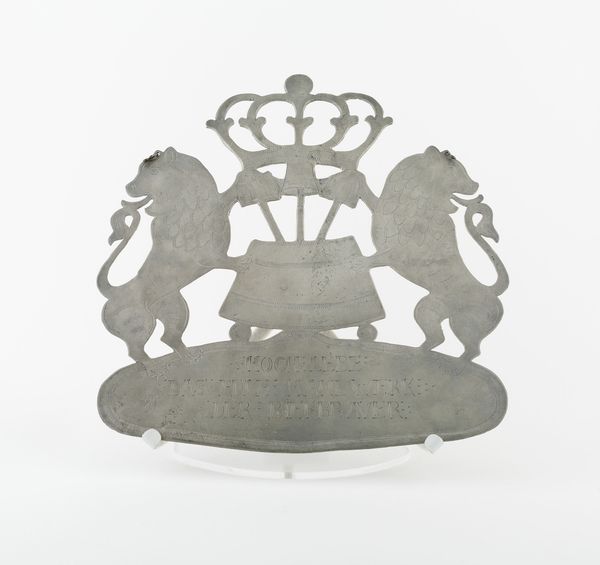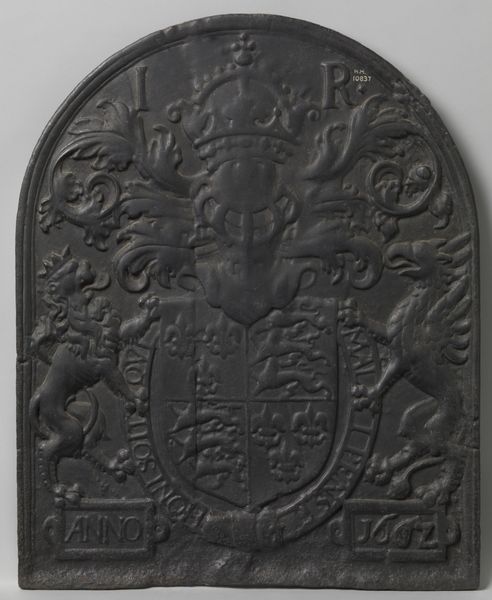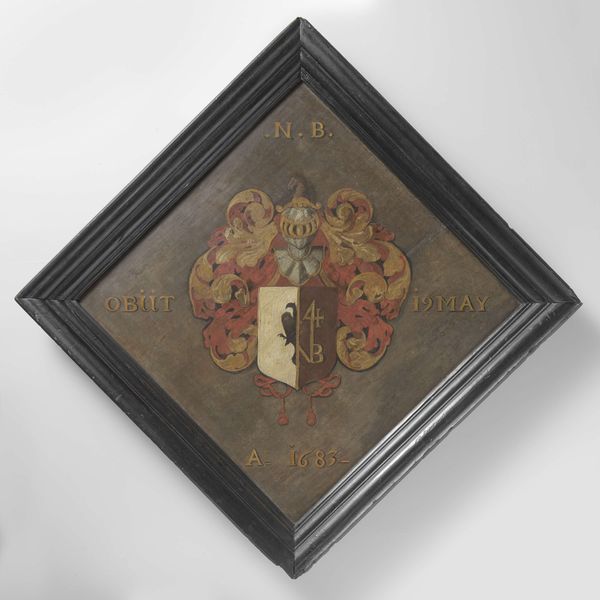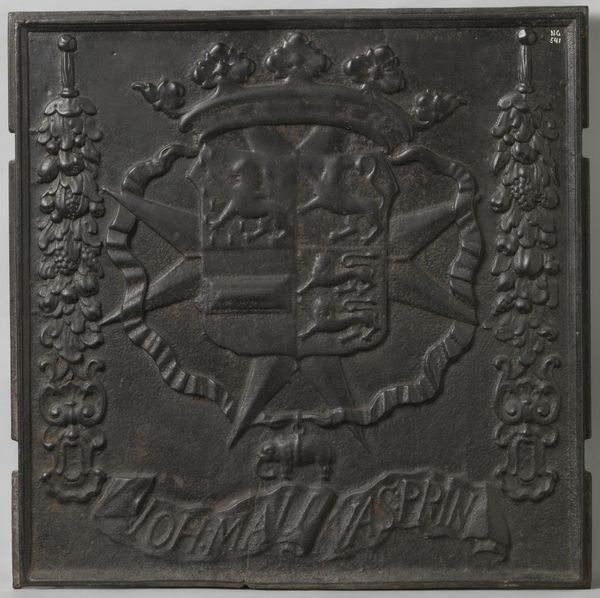
Herinneringsplaat voor de Tentoonstelling van Kunst en Nijverheid voor de Werklieden te Amsterdam, juni 1878 1878
0:00
0:00
print, metal, engraving
# print
#
metal
#
coloured pencil
#
history-painting
#
decorative-art
#
engraving
Dimensions: height 191 mm, width 164 mm
Copyright: Rijks Museum: Open Domain
Curator: Well, isn't that something? A commemorative plate. It's titled "Herinneringsplaat voor de Tentoonstelling van Kunst en Nijverheid voor de Werklieden te Amsterdam, juni 1878"—which I will shorten to, "Commemorative Plate for the Amsterdam Workers' Arts and Crafts Exhibition, June 1878". G. Acronius is the artist, crafted in 1878 using printmaking techniques, likely engraving on metal. Editor: The plate gives me the shivers. I am trying to envision its production process in the workshop. I'm immediately drawn to the worn texture. How many hands have handled it? It's practically a mirror reflecting social strata of the time. The very material tells a story about labor. Curator: Precisely! I mean, think of those exhibitions, those artisan fairs... places where beauty and skill were meant to uplift. But let's not ignore that crown sitting atop the coat-of-arms. Reminds you who’s ultimately holding the purse strings, eh? The detailed scrollwork, the year emblazoned, the lions… symbols swirling, inviting pride, maybe even prompting resistance? Editor: You’re spot-on with the tension there. I see those intertwined ribbons more as restraints—visual indicators of the constraints put upon the labor force by industrialists and government regulations. Metal isn't inherently precious, right? Its worth lies in the labor and the process that transformed it. Someone decided to make the workers proud of what they do for a small compensation. Curator: It’s walking a fine line, isn't it? Offering the working class some dignity while showcasing civic pride. I feel the decorative style softens what could’ve been pure propaganda, maybe letting viewers discover for themselves the subtle complexities in play. Those imperfections—the smudges— add a human element that no glossy print could ever convey. Editor: Indeed. It serves a stark reminder that every object contains embodied energy of extraction, transformation, and design—a visual symphony conducted by political agendas. We look at a piece celebrating industry but we see labor rendered both visible and strangely invisible at once. Curator: This metal remembers far more than anniversaries; it remembers hands. It holds its tongue in swirls of symbolism, challenging our gaze today, beckoning us to listen a bit more carefully. Editor: You said it perfectly. Every single thing on this plate is a consequence of very specific social conditions, each as precious and expendable as we remain today.
Comments
No comments
Be the first to comment and join the conversation on the ultimate creative platform.
